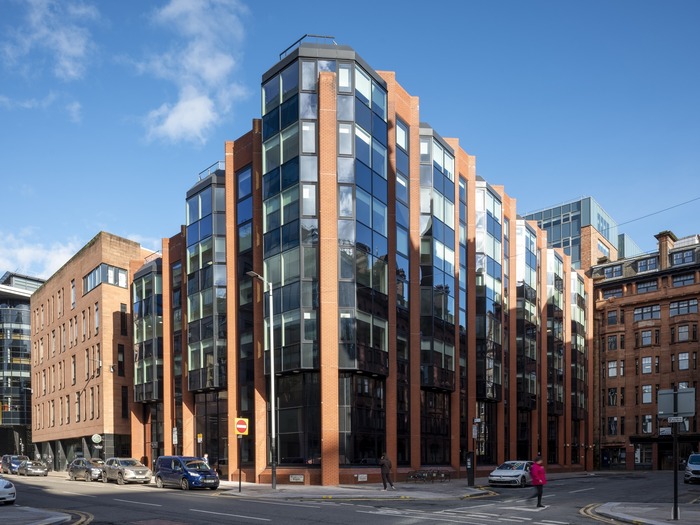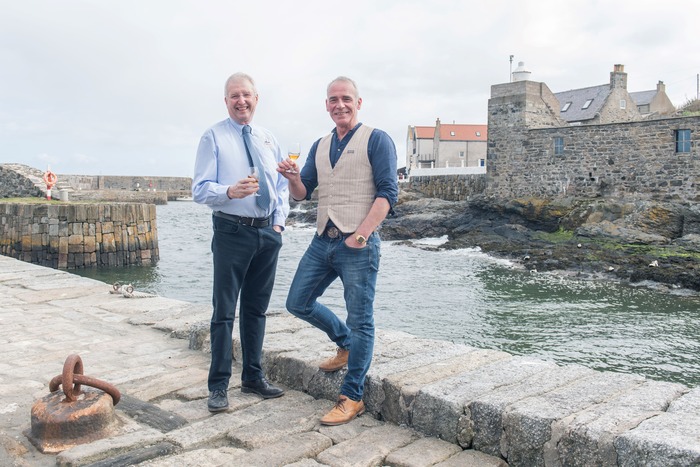SCOTLAND has established a comparatively strong position within the UK in terms of attracting Foreign Direct Investment (FDI) having recorded an increase in both the number and share of UK projects in 2019, as revealed in the EY Scotland Attractiveness Survey 2020 launched today.
The EY report examines the performance of Scotland and perceptions of the UK and Europe as destinations for FDI, and this year includes a survey of 800 international investors looking at the impact of COVID-19 on investment.
For the seventh consecutive year Scotland has retained its title as the most attractive location in the UK outside of London for inward investment.
This is evidenced by a 7.4% increase in the number of projects secured, from 94 in 2018 to 101 last year. The pace of growth in Scotland was faster than the UK as a whole which achieved a 5.2% increase (reaching a total of 1,109 projects in 2019) while Scotland’s share of all UK projects also rose to 9.1% from 8.9% in the same time period.
Scotland also performed better in terms of job creation in 2019 than in recent years, rising to second place from fifth in the UK in 2018. The average size of FDI projects in Scotland created 83.6 jobs last year which is the highest since 2011 (when the figure was 116.2) and ahead of the UK average for 2019 of 51.4.
This strong performance prior to the global on-set of COVID-19 and the nature of investors decisions around inward investment presents a relatively positive outlook for Scotland’s ability to remain an attractive destination for FDI.
Ally Scott, UKI Managing Partner for EY Scotland, said: “Scotland has yet again achieved an impressive performance on FDI in 2019. The pace and scale of growth achieved is evidence of Scotland being well-placed to tackle the challenges presented by COVID-19 and an uncertain economic environment.
“Importantly, Scotland continues to increase the quality of projects it attracts as demonstrated by the high average number of jobs created, a figure far ahead of the UK in 2019.
“While Scotland has a strong foundation to navigate beyond COVID-19, there is no scope for complacency. Now, more than ever, there must be a strong partnership between government, business and society to formulate a careful, considered and compelling route back to economic growth.”
Sectors and activities
There has been a big shift in the sectors responsible for most FDI in Scotland from 2018 to 2019 with machinery & equipment (58% increase) and agri-food (78% increase) leapfrogging into first and second position ahead of digital and business services (27% and 31% decrease respectively) in joint third. This is the first time in a decade that the service sector has not ranked in the top two.
In terms of the type of activities carried out, manufacturing shared the top spot with sales & marketing as both secured 32 FDI projects in 2019. The former experienced an increase of seven while the latter decreased by ten. Research & Development (R&D) secured third place following a notable rise in projects (from nine to 14). The biggest percentage increase was in headquarters (HQ) projects, which leapt from two projects in 2018 to nine in 2019 – a rise of 350%.
Ally Scott added: “Scotland has a real strength in the diversity of projects it attracts with a healthy blend between manufacturing and services. The boost in manufacturing places Scotland as the UK leader for this sector. This, along with the growth in machinery & equipment and agri-food, plays directly into Scotland’s international reputation and capabilities within the food and drink market.”
Scottish cities prove to be increasingly attractive
Scotland’s three largest cities all experienced an increase in FDI projects in 2019, Aberdeen 88%, Edinburgh 10% and Glasgow 21%, with all three appearing in the top ten most attractive cities for inward investment in the UK, excluding London. Glasgow overtook Edinburgh as Scotland’s leading city to sit in third position behind Manchester and Birmingham while the capital held firm in fourth and Aberdeen bounded up from tenth to seventh.
Both Edinburgh and Glasgow attracted investment from a variety of countries, 11 for each city. The Scottish capital is more reliant on the US with half of the projects originating from there while in Glasgow this was a little more than a third. In both cities digital, business services and finance account for around half of FDI.
Aberdeen’s FDI was diverse both in terms of country of origin but also sector. The majority of projects came from the US followed by Norway, the Netherlands and Japan which all contributed multiple projects. Just under half of the total were in the energy sector but projects were also secured in business services, digital, machinery & equipment, electronics and transport equipment.
There was also growth in towns with Livingston and Falkirk both attracting more projects in 2019 than in 2018.
Resilient pipeline in turbulent times
The report indicates that investor intentions towards the UK, compared to other FDI destinations in Europe, remain relatively positive when they look beyond the immediate impact of COVID-19.
Mark Gregory says: “There is no doubt that the outlook for FDI will be extremely challenging as the world tries to recover from the economic and social impact of COVID-19. Asked whether they expected to see an increase or decrease in FDI globally following a period of recovery from the COVID-19 pandemic, a net -71% of investors responding to EY’s survey said they were anticipating a decline in global FDI. Asked the same question about investment specifically into the UK, the balance expecting a decline was -44 – still very challenging, but more positive than the overall market outlook.
“Before COVID-19 changed the picture completely, 2020 was set to be a record year for UK FDI. At the start of the year, 31% of investors said they were planning to invest in the UK in 2020 – a significant increase from 23% in last year’s survey. This was the highest positive sentiment for the UK in over a decade, and higher than the corresponding numbers for other European countries.”
Origins of FDI projects shifts as investors look beyond Brexit
For the UK as a whole, analysis of changes in the origins of FDI projects over the three years since the 2016 EU Referendum shows that the UK has been able to rebalance its investments to compensate for a decline in EU originated projects, further illustrating the transition underway in the UK economy.
Meanwhile, investors appear less likely to regard ‘Brexit’ as a risk factor, with just 24% of survey respondents citing it as a risk factor this year, compared to 38% last year.
The number of EU-originated FDI projects in the UK continued to decline to 340 in 2019, albeit at a slower pace than before, and is now 17% below its 2016 peak. As the EU’s share of total FDI projects in the UK falls, other countries have filled the gap. US FDI projects in the UK have increased to 376 (up 9% from the previous year), surpassing the highest ever total from the EU (340 in 2016). Meanwhile investment from countries like Turkey and Israel has grown rapidly, by 350% and 143% respectively.
The five largest contributors of investment projects for Scotland in 2019 were the US, France, Germany, Japan and Norway. The US extended its lead as the biggest single source of FDI, accounting for 35% of inward investment into Scotland (an increase of 1% from 2018). Investment into Scotland from France increased in 2019 to secure second largest share of FDI with 9% while across the UK French originated investment was down slightly. Germany, Japan and Norway complete the top five origins of FDI into Scotland with each accounting for 7% of the total.
Scotland snared the majority of projects from Norway (seven of 15), which signals the existing strength between the two North Sea nations and presents avenue of opportunity for further growth outside the EU beyond Brexit.
For the first time Russia entered the top ten sources of FDI projects for Scotland, this reflected an increase in the number of Russian FDI projects across the UK.
Scotland shows greater aptitude for ‘levelling up’
While the UK’s leading cities were generally thriving in terms of FDI in 2019, the performance across the UK was mixed. In Scotland, there is more geographic balance in terms of the cities attracting FDI and while Edinburgh and Glasgow received the most projects by quite a margin ahead of Scottish towns, there was notable growth in towns, Livingston and Falkirk in particular.
Supplementary research by EY and the Centre For Towns, also published today, finds that the share of FDI going to the capital cities in England, Scotland and Wales and other ‘Core Cities’, excluding Belfast, increased from 31% of the total in 1997 to 67% in 2019.
During this period, every other place type in the UK identified by the Centre For Towns has seen its share of FDI fall. The most severe share losses were in medium-sized towns, with a fall from 20% of FDI in 1997 to 6% in 2019, and coastal towns, where the decline was from 8% to 1% over the same period.
Mark Gregory comments: “Scotland has less of an issue with levelling-up than the UK but there is scope to make further progress. Manufacturing was a real success for Scotland in 2019, this should be analysed with a view to spread this activity across Scotland.
“Sustainability and levelling up should be placed at the heart of infrastructure and skills policy by the Scottish and UK governments. As we move towards a hi-tech economy, investment in digital infrastructure will become increasingly important, particularly in Scotland’s economic hubs outside of the central belt.
“Universities will also play an important role in developing talent and skills. This should form the basis for an expansion of their role as true civic establishments, playing a central role in their local economies and communities.”





